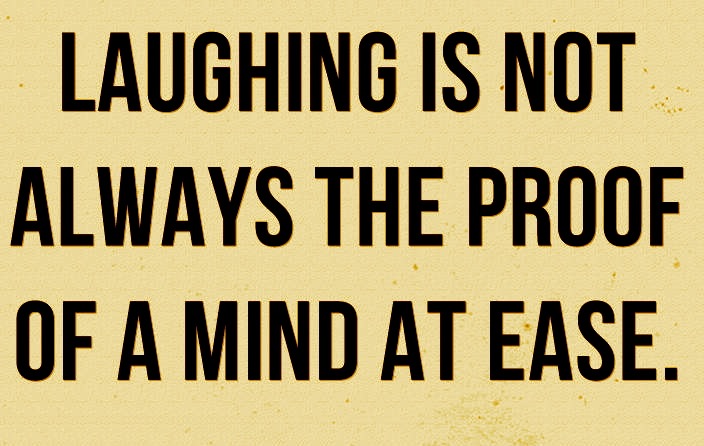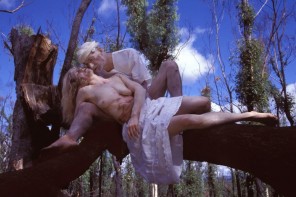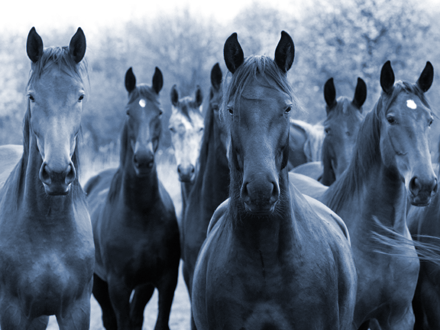Robert Drewe likes a laugh – but he’s not too sure about laughing to order, and as for laughter yoga, you can count him out…
You might have been having too much actual fun to notice, but for the past decade people have been faking laughter – pretending to chortle, making exaggeratedly amused facial expressions and miming extreme jollity — in public places all over Australia.
It’s disconcerting to encounter your first laughter club. When three perspiring grandmotherly women accosted me and my family on the boardwalk at Bondi Beach one summer weekend when the temperature had leapt to a record-breaking 46 degrees, I wondered who these lunatics were.
“Ho, ho, ho! Ha, ha, ha!” the women chanted, jumping up and down and clapping their hands above their heads. Sweat ran down their red faces and they looked ready to expire. “Hee, hee, hee! Won’t you join us?” they invited. “Just clap your hands and say ‘Ho, ho, ho.”
“No thanks,” I said, as we nervously backed away. They didn’t look too happy at our reaction but to their credit their strange heatwave endeavours did provide my children with a few genuine laughs rather than simulated ones.
Of course humour should be encouraged. We understand its benefits to physical and emotional health. Laughter helps counter stress and pain, lightens your load, keeps you grounded, improves well-being and connects you to others. Laughing is enjoyable. Laughing is the natural human response of every race on earth to something funny.
But somewhere along the line some people thought the world wasn’t funny enough any more to make us laugh. We needed artificial online instruction and laughing demonstrators and laughter conferences and special How-to-Laugh CDs and DVDs.
Such urging reminds me that in my father’s Readers Digests I’d always turn to the section instructing me that ‘Laughter is the Best Medicine’. Unfortunately it wasn’t. Its jokes were so lame they rarely brought a smile and vaguely depressed me. Even the section ‘It Pays to Increase Your Word Power’, by Wilfred J. Funk, was funnier – his name anyway.
I didn’t find Disney cartoons particularly amusing either. What made me laugh were Bugs Bunny and Daffy Duck, the Goon Show and Monty Python. Jerry Lewis didn’t last the distance to adolescence, and Adam Sandler and American gross-out comedies lost me from the beginning. Of the ancient humour urged on me by my elders, Charlie Chaplin seemed too simpering and sentimental, but Buster Keaton and the famous black-and-white footage of W.C. Fields dealing with sticky wrapping paper still work their magic today.
Unfortunately I’ve never been able to track down one of the most unintentionally funny films ever: Australian newsreel footage of an extremely superior outback wildlife handler, a generation before Harry Butler, and two before Steve Irwin, demonstrating how easy it was to handle a python. And the snakeman’s being gradually entwined, limb by limb, tripped over, and enveloped by the snake. The increasingly shaky film (the cameraman was obviously uncontrollably laughing) comes to an abrupt end when the camera falls over; clearly the cameraman had to rush to help release him.
“If you’re not going to take this seriously
you can leave the room…”
Now we have Laughter Yoga, developed in Mumbai, India in 1995 by Dr. Madan Kataria, a physician, and his wife Madhuri, a yoga teacher. Their website says that Dr. Kataria recognised that people were laughing less, were more stressed, and that laughter had significant health benefits.
“Laughter Yoga is a group session of aerobic activity which turns fake laughter into real laughter. It consists of hand-clapping rhythms, yoga breathing exercises and laughter exercises. The brain cannot differentiate between fake laughter and genuine laughter, and provides the benefits of laughter anyway. In a group, laughter becomes contagious and the participants gain the benefits.
“Dr. Madan and Madhuri Kataria have since travelled to 42 countries to teach Laughter Yoga. There are now 6000 Laughter Clubs around the world. Laughter Yoga was introduced to Australia in 2000 and we now have Laughter Clubs around the metro areas and in the country.”
Good luck to them, and best wishes for the 2014 Laughter Conference to be held in Brisbane in October. Incidentally, two friends of mine went to an early club meeting at a city club. They found the exercises, the grimaces and fake laughter – all the “ho, ho, hos” and “hee, hee, hees” – amusing and started to genuinely laugh.
“If you’re not going to take this seriously, you can leave the room,” said the stern instructor, and sent them packing.
PS – If you’d like an alternative view of Laughter Clubs watch out for our post on Byron Bay’s first Laughter Club which meets every Monday evening between 6-7pm at the Byron Sport and Cultural Complex.





